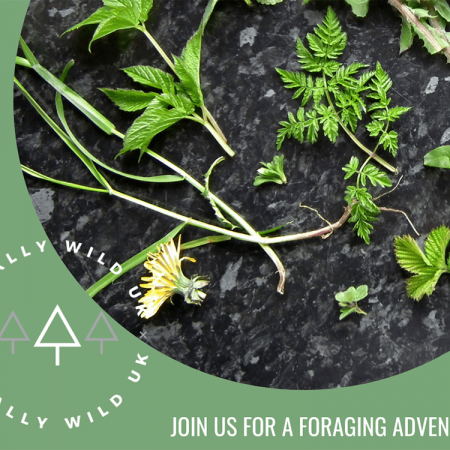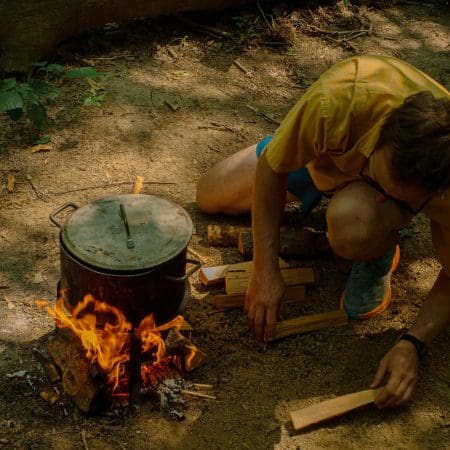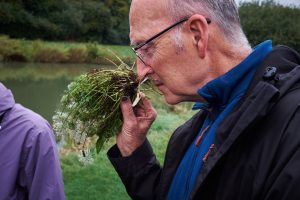Through this piece we’re going to continue looking at foraging in Woodland with a focus on newly established woods – the kind you might find planted recently to create new forests for the future, or that might have sprung up naturally by themselves, perhaps on a peice of waste ground or neglected urban space.
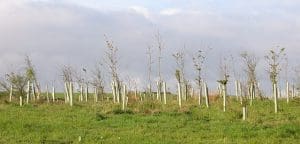
6 common and easy-to-identify species that you are likely to find in young woodland
To start with, I’ve chosen 6 species that are relatively easy to identify by a beginner, and that get established fairly early on in a newly planted woodland, or one that has grown up by itself on waste ground. I’d expect to see these species turning up within 30 years or so, which in woodland terms is really young! So they should be fairly easy to find in most parts of the UK.
Elder
What could be more summery than a drink of elderflower cordial or sparkling elderflower champagne? This small and adaptable tree can tolerate deep shade so you may find it hanging out below much bigger trees, but it thrives best and gives the most flowers and berries when it has a bit more light, so look for it round the edges and hedges. It also spreads easily and turns up quickly in newly planted woodlands and hedges, and even waste ground, as the seeds are spread by birds.
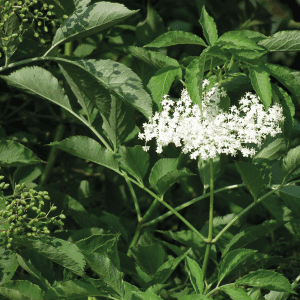
Jelly Ear Mushrooms
Jelly Ear fungus grows pretty much exclusively on Elder, so if you already found a good Elder patch you may as well see if this fungus is visible too! It looks like a soft, wobbly brownish grey cup or ear shape, growing directly out of the trunk or branches of the elder tree. It’s a great beginner fungus too because there is nothing particularly dangerous you could confuse it with. It’s a great addition to East Asian style dishes, can be dried and powdered to add extra savoury taste to soups and stews.
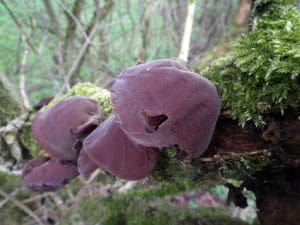
Birch
Birch is another of those pioneer species; whether or not someone planted it on purpose, the seeds blow in on the wind and , like Elder, its always one of the first to get started on a blank bit of ground. It grows fast, and is a great sight for foragers – the young leaves can be eaten or used in tea; and once the trunk is over about 25cm diameter it can be tapped for birch syrup. Even better, its a host to a number of delicious fungi that form a mycorhizal relationship with the birch trees roots – Brown Birch Boletes are just one example. So a birch woodland is a great place to mooch about in autumn.

Wood Avens
Wood Avens also known as clove root. This plant is very common in shade and spreads easily due to the hooked seeds that humans and animals unwittingly take for a ride. Its one of the first woodland plants to get established in new planted or secondary woodlands, so you dont need to be in a particularly well established forest to find plenty of it. The leaves crisp up nicely if you fry them, and the root tastes of cloves – but bear in mind you need land owners permission before you can dig it up.
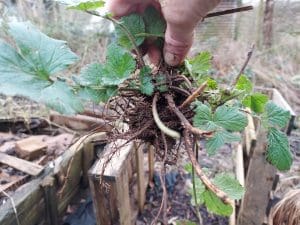
Himalayan Bolsom
Himalayan Balsam. This is rapidly spreading as an invasive species, causing a great deal of controversy over how best to deal with it. Our attitude is : If you can’t beat it, eat it! It thrives in damp and shady woodlands and can outcompete other plants to the point it completely takes over. So you don’t need to feel at all guilty about taking everything you can see – if you clear a patch you will be helping redress the balance and giving other plants a chance. And because of all the seeds in the soil, it will be back soon anyway! The whole plant is edible; the flowers are mild tasting but colourful additions to salads and drinks, the seeds are deliciously nutty and even better lightly toasted, and the hollow stems can be used as straws!
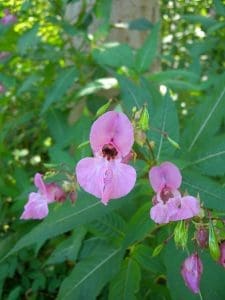
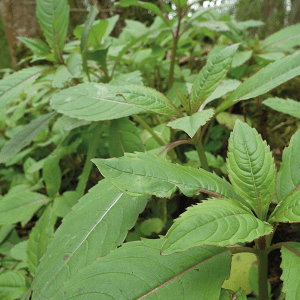
Hazel
Hazel nuts are delicious, but you are going to have to be on the ball to get there before the squirrels! If you get to know what the tree looks like, and spot it by the golden yellow catkins in spring, you can stake it out ready to pounce in Autumn. Pick the nuts when they’ve got nice and plump but while they’re still green, then let them ripen at home in a cool dry place. The native Hazel tree of the UK, corylus avellana, has smaller nuts with thicker shells and is well adapted to growing in the damp and cold so it turns up just about anywhere. If you’re lucky ( and perhaps are foraging further South, or near where hazel nuts have been planted in gardens or grown commercially in the past) you may find trees producing larger thinner shelled nuts – these are known as cobnuts or filberts and are likely hybrids of corylus maxima which is more native to South-Eastern Europe and the Levant. The hybrids were introduced by people looking to maximise their crops, and continue to cross-pollinate with nearby wild trees an add those genes to the local pool. Newly planted woodland often includes a few.
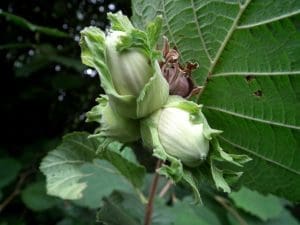
In Conclusion
Foraging in newly established woodland can be a fun and rewarding experience. Elder, birch, wood avens, Himalayan balsam, and hazel trees are some of the common species that you can find in young woodlands, making it easier for beginners to identify them. Elderflowers, jelly ear fungus, birch leaves and syrup, wood avens roots, Himalayan balsam flowers and seeds, and hazelnuts are all edible and can be used in various recipes. When foraging, it’s important to respect landowners’ permission and not to over-harvest. Foraging in young woodlands is a great way to appreciate nature and its bounty while supporting the growth of new forests.



